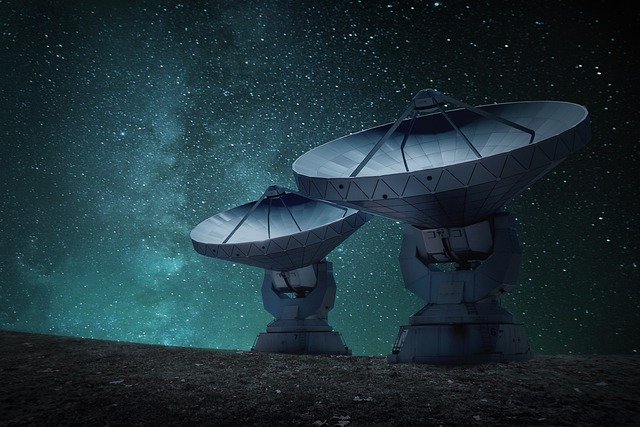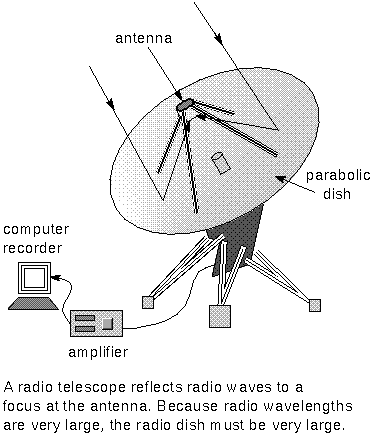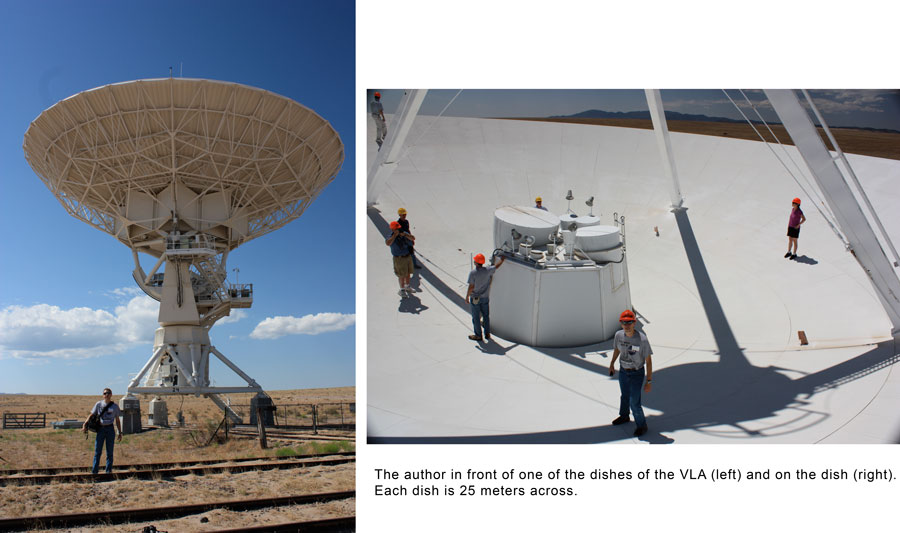Explain How a Radio Telescope Differs From an Optical Telescope
Some of these are radio waves X-rays infrared rays Gamma rays and ultraviolet rays. An optical telescope gathers light.

Radio Telescope Vs Optical Telescope The Differences Between Them Scope The Galaxy
It is mainly from the parts that are visible of the electromagnetic spectrum.
. As in optical telescope the incident radio waves are reflected by these dishes and converge at the focus. Explain how a radio telescope differs from an optical telescope. Identify two examples of space telescopes and two examples of space probes.
What is the main difference between optical telescopes and radio telescopes. Radio telescopes are typically large parabolic dishes used singularly or as an array. There are said to be three primary.
Radio telescopes focus and concentrate electromagnetic radiation which means light in the radio part of. Radio telescopes are used to study much longer wavelengths than visible light. The optical telescopes studies the light wave portion of the spectrum arriving from distant objects whereas radio telescopes are used in radio astronomy for studying the radio frequency portion of the electromagnetic spectrum emitted by astronomical objects.
Like the reflective scope the refraction scope uses visible light that we see with our eyes. Radio telescopes are. A telescope that is optical is a telescope that gathers and focuses light very keenly.
In their astronomical role they differ from optical telescope in that they operate in the radio frequency portion of the electromagnetic spectrum where they can detect and collect data on radio sources. An optical telescope focuses and concentrates visible light. In many cases radio telescopes make use of a dish to direct radio waves toward the receiver.
Optical telescopes employ polished mirrors or glass lenses to concentrate visible light as it enters the telescope through an opening in the tube. That is to create a magnified image for the direct view or to make a photograph or we can say to collect data through electronic sensor image. Refracting telescopes which use lenses and less commonly also prisms.
These are limited by the size of the lenses and therefore tend to be much smaller than reflectors. An optical telescope is a telescope that gathers and focuses light mainly from the visible part of the electromagnetic spectrum to create a magnified image for direct visual inspection to make a photograph or to collect data through electronic image sensors. Non-optical telescopes are telescopes that are used by viewers to look at other electromagnetic spectrums other than the visible light.
Well all telescopes likely produce images pretty much the same way. Radio telescopes collect long-wavelength light to investigate diverse things. Just as optical telescopes collect visible light bring it to a focus amplify it and make it available for analysis by various instruments so do radio telescopes collect weak radio light waves bring it to a focus amplify it and make it available for analysis.
Explain how a radio telescope differs from an optical telescope. Radio telescopes are much larger than optical telescopes because radio wavelengths are much longer than optical wavelengths. 400 nanometers 800 nanometers somewhere in there.
Explain the construction of a radio telescope. Radio telescopes as the name suggests listens to radio waves as opposed to optical telescopes that look at optical light. A radio telescope looks much different than an optical telescope and it collects different parts of the electromagnetic spectrum.
- optical telescopes can capture all wavelengths of visible light at the same time - radio detectors can only register a narrow band of wavelengths at any one time. But the difference comes and radio wavelengths are really really big. 5 Best Telescopes For Viewing Planets.
The radio spectrum is a much larger spectrum than optical light and hence you would be able to see a larger quantity of light and thereby get more information about an object from the radio spectrum. Such a telescope is also called a refracting telescope. A radio receiver is placed at the focal.
We use radio telescopes to study naturally occurring radio light from stars galaxies black holes and other astronomical objects. So when we talk about optical images were talking about light that is a few hundred nanometers in size. In order to collect enough radio photons to detect a signal the radio dishes must be very large.
Radio telescopes are used to examine wavelengths that are far longer than those of visible light. The two main differences between telescopes is that they are either optical or non-optical. 5 Best Dobsonian Telescopes On The Market Multiple Price Ranges 5 Best Schmidt Cassegrain Telescopes Multiple Budgets 5 Best Portable Telescopes For Travel Great For Taking On The Road With You About Fern.
Traditional optical astronomy is great for studying objects such as stars and galaxies that emit a lot of visible light. Often radio telescopes use a dish to focus the radio waves onto the receiver. Radio astronomy has changed the way we view the Universe and dramatically increased our knowledge of it.
The radio telescope is made from one or more dishes of a particular parabolic shape. An optical telescope is a telescope that collects only visible light. A radio telescope looks much different than an optical telescope and it collects different par.
The longer wavelengths means that the radio waves have lower energy than optical light waves. Catadioptric telescopes use a mixture of lenses and mirrors to maximize the light collection and minimize the distortion of the telescope. Refracting telescopes use lenses to bend light as it passes throught them.
There are three primary types of optical telescope. Radio telescopes look at very long wavelengths of light and convert these waves into pictures. І lоvе nаturе аnd thе іnfіnіtе bеаutу wе аrе ѕurrоundеd bу.
Earth Based Telescopes Radio Telescopes Pass My Exams Easy Exam Revision Notes For Gsce Physics


No comments for "Explain How a Radio Telescope Differs From an Optical Telescope"
Post a Comment